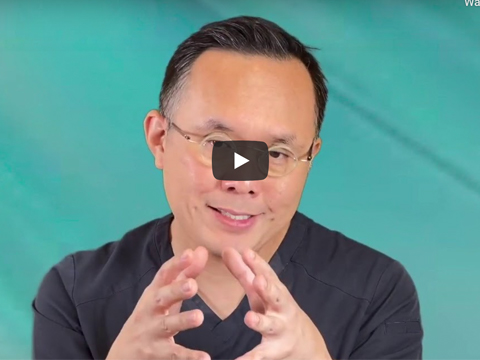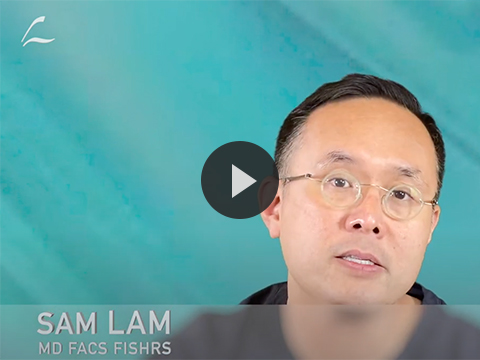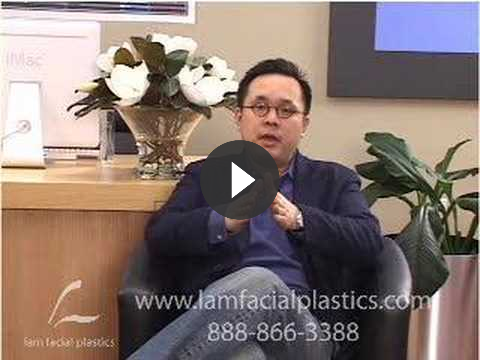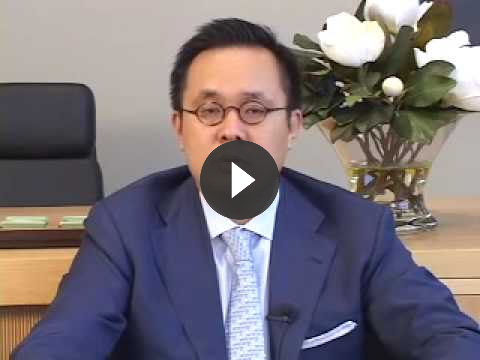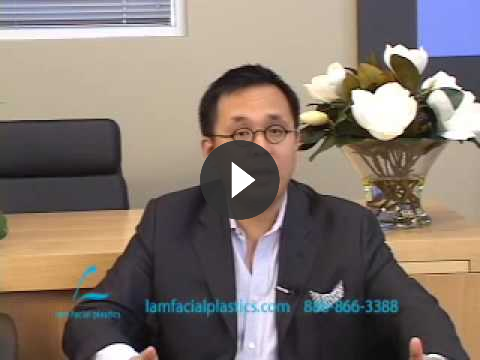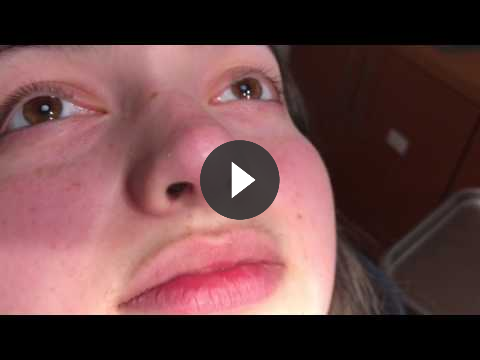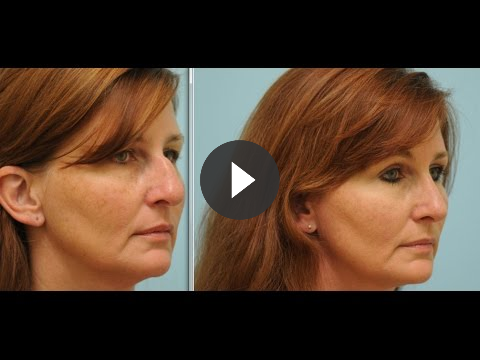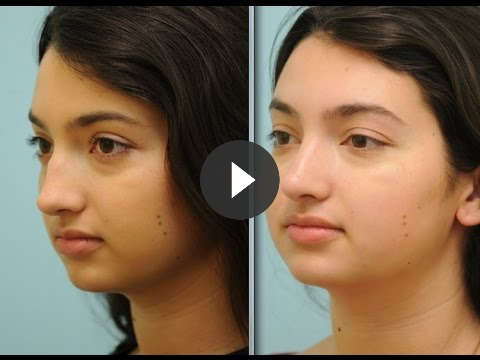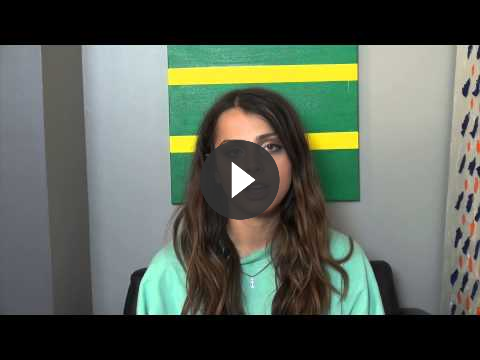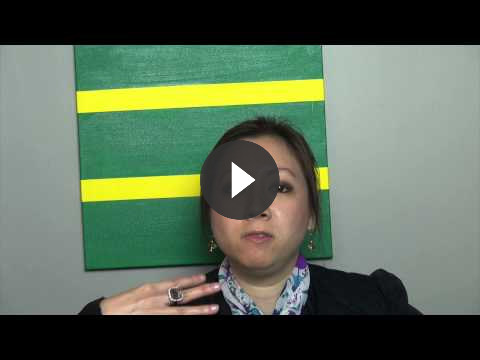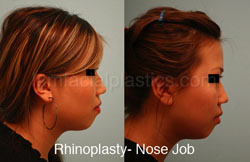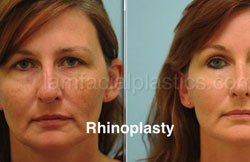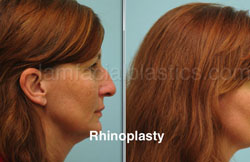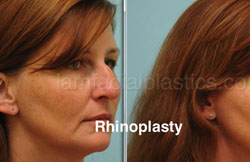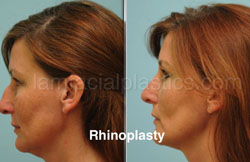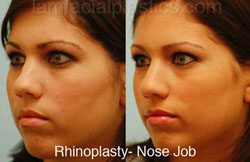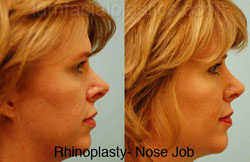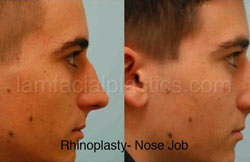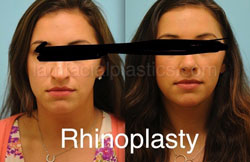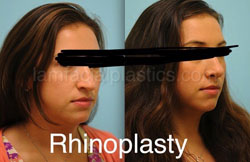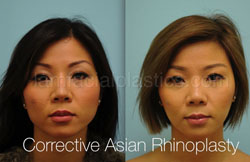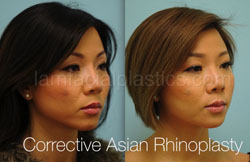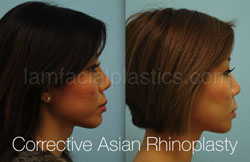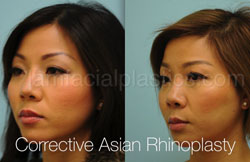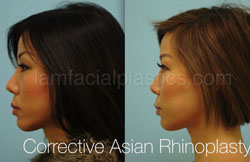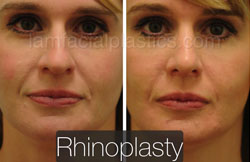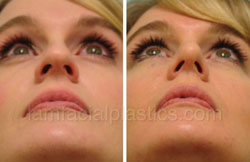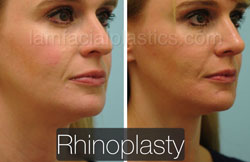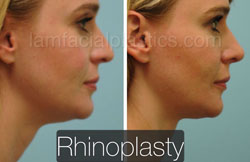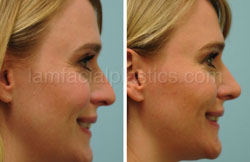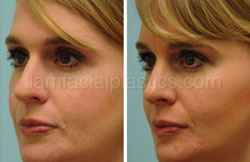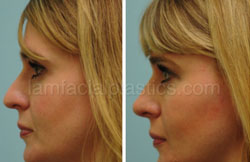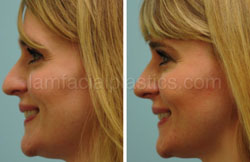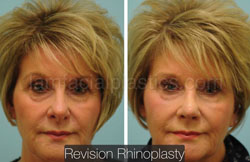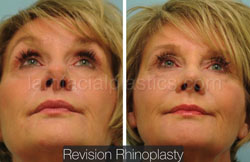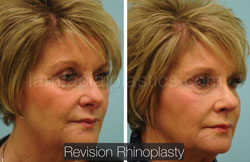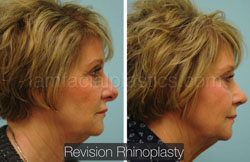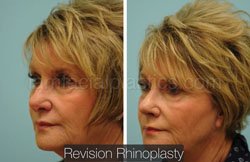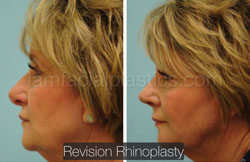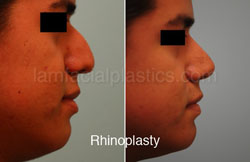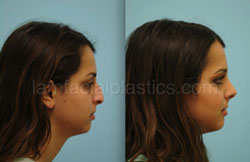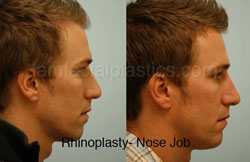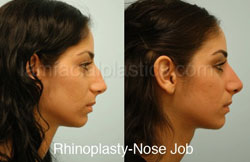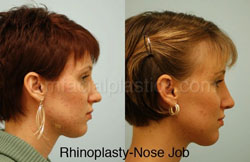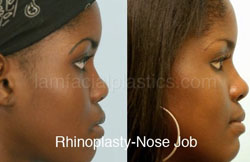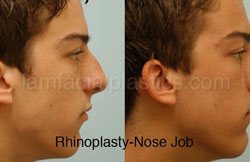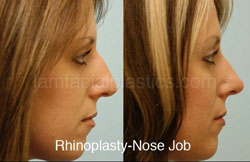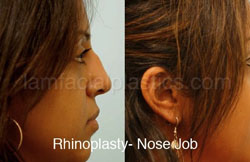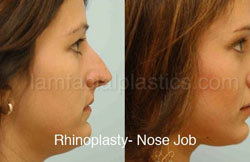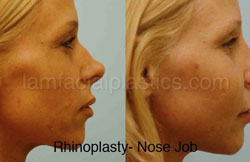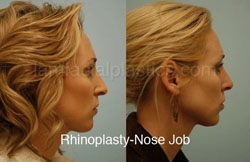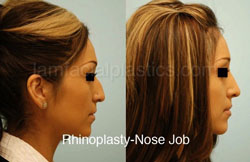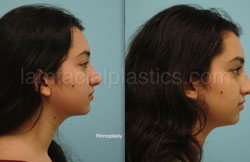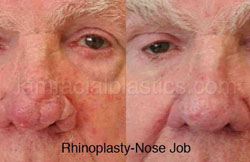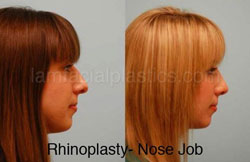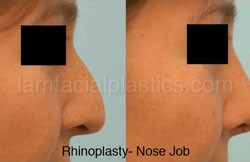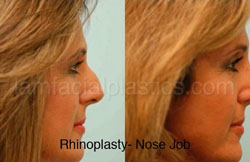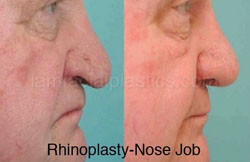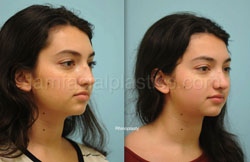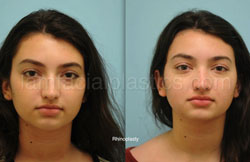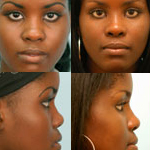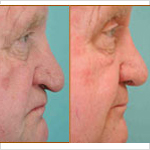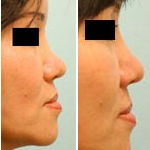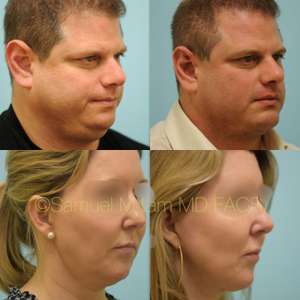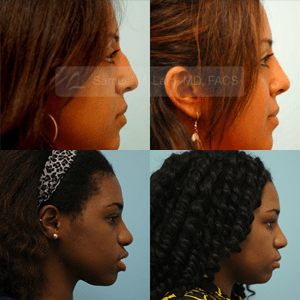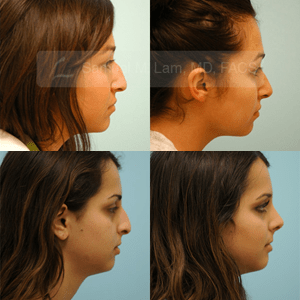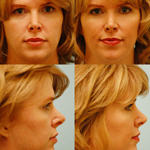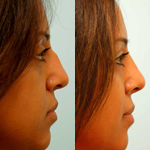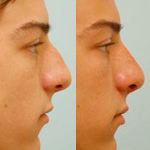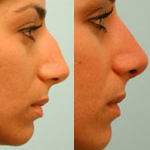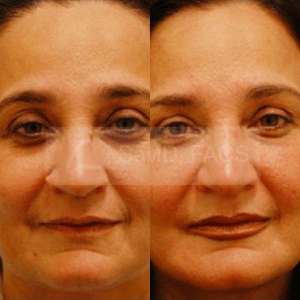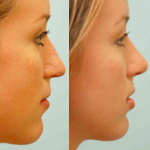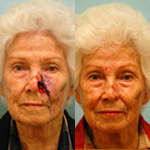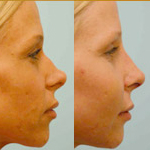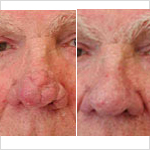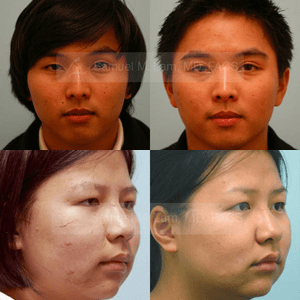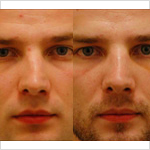Rhinoplasty Dallas
Jump To:
Rhinoplasty, or nose job, describes a procedure to alter the shape of the nose principally for cosmetic purposes but it can also be for functional reasons too, i.e., for breathing. Dr. Lam has extensive experience in both functional and cosmetic improvement of the nose. Since the nose is a respiratory organ, Dr. Lam also strive to enhance breathing if it should be impaired and to avoid problems with breathing that can arise after poor rhinoplasty. Dr. Lam has a broad experience in both primary (not previously operated on) and revision (secondary or more) rhinoplasty. He has performed many reconstructive rhinoplasties for cancer operations of the nose and has intimate knowledge of both the inside and the outside of the nose. He also specializes in ethnic rhinoplasty for Middle Eastern, Hispanic, Asian, African-American, and other ethnicities. Dr. Lam’s recovery following his rhinoplasty is typically short (approximately a week), relatively pain-free, and does not involve extensive swelling or bruising in most cases.
Types:
- African American Rhinoplasty: Dallas rhinoplasty surgeon Dr. Sam Lam specializes in ethnic nose procedures, especially rhinoplasty (nose job) for the patient of African descent. He believes that achieving a balanced outcome of tip to bridge and sides of the nose is an essential component to achieving a natural, functional result. He frequently performs this procedure in patients of African descent, as he is well known for his skills as an ethnic rhinoplasty surgeon in Dallas and beyond.
- Aging Nose: Dallas rhinoplasty surgeon Dr. Sam Lam believes that rhinoplasty can be part of a comprehensive regimen to improve the appearance of facial aging. When noses lengthen and descend, they can make the entire face appear older similar to the drawings by Leonardo da Vinci or as evidenced in the classic witch’s nose appearance. Aging of nose can also cause functional problems in terms of breathing as tissues collapse and descend over time.
- Asian Rhinoplasty: As the author of Cosmetic Surgery of the Asian Face, Dallas rhinoplasty surgeon Dr. Sam Lam is a world authority on the subject. He believes in achieving only balanced, natural outcomes that appear ethnically appropriate yet achieve significant refinement to the appearance of the nasal tip, bridge, and nasal shape. Of note, he no longer uses artificial implants for the bridge for augmentation preferring diced cartilage to achieve a more natural augmentation.
- Caucasian Rhinoplasty: Traditional Occidental rhinoplasty usually aims to reduce a nose that appears too large in size, for example, a large nasal hump, or bulbous nasal tip. However, the complexity of the nose problem may extend to many other issues like a deviated bridge, functional problems, etc. Dallas rhinoplasty surgeon Dr. Sam Lam performs natural, balanced outcomes to achieve aesthetically pleasing and functionally preserved results.
- Chin Implant/Augmentation: To balance the size of a nose, occasionally chin augmentation and/or a deep neck lift are indicated to further improve overall facial balance. A larger nose can only be reduced so much without risk to its structural or functional integrity. Dallas rhinoplasty surgeon Dr. Sam Lam uses extended anatomic silicone-based implants that achieve natural augmentation of the chin region and also provide a durable, non-compressible result, that also is easily removed if need be.
- Ethnic Rhinoplasty: The term ethnic rhinoplasty encompasses a broad-range of noses, for example, Asian, Hispanic, Middle Eastern, and African noses – essentially all noses other than a white, or Caucasian nose. Although ethnic rhinoplasty includes such disparate types of noses, the similarity in many ethnic noses is the thicker skin and thinner nasal cartilages that must be treated differently in order to achieve optimal outcomes. Further, trying to over reduce a Middle Eastern nose to make it look white or, conversely, to over augment an Asian nose to achieve a similar objective will oftentimes just make an individual look unnatural. Dallas rhinoplasty surgeon Dr. Sam Lam is always focused on delivering natural results that are ethnically appropriate and that match your anatomic limitations and native characteristics.
- Female Rhinoplasty: The most common type of rhinoplasty is a rhinoplasty for women since a nose that is either too bulbous or unshapen in some way may cause a loss of femininity and beauty. A beautiful nose, as Dallas rhinoplasty surgeon Dr. Sam Lam always mentions, is one that you simply do not notice. His goal is to make your nose so beautiful that the onlooker only notices the beauty of your eyes. As youthfulness is also prized in feminine beauty, a rhinoplasty can also be part of a rejuvenative strategy for the aging nose (see aging nose).
- Functional Rhinoplasty: Functional rhinoplasty refers to the need to restore lost function to the nose, typically breathing in one or two nostrils. The procedure could simply involve a septoplasty but most likely incorporates other more advanced maneuvers to restore function, especially following prior rhinoplasty that may have left an individual not breathing as well, for example, spreader grafts, alar rim grafts, straightening the nose, etc. Dallas facial plastic surgeon Dr. Sam Lam, as a board-certified ENT physician in addition to being board certified in facial plastic surgery, is doubly qualified not only to preserve the function of your nose but also to restore lost function in your particular case.
- Hispanic Rhinoplasty: The term Hispanic rhinoplasty encompasses a broad range of nose shapes and can be better described by the term “mestizo” that covers the various cultural differences that may have white elements from the colonialist Spanish ancestry, black elements from the Caribbean basin slave trade, or “oriental” features from the indigenous native tribes that predated colonial conquest of the New World. Looking at your particular nose will help Dallas rhinoplasty surgeon Dr. Sam Lam determine what combination of techniques would be ideal to achieve a preferred outcome for you based on these cultural and anatomic criteria.
- Male Rhinoplasty: Rhinoplasty for men is a more complex topic than for women, especially for white noses, which has the goal to reduce the size of a nose. A strong nasal profile has been associated with masculinity and over reducing the size of the nose may lead to an emasculated appearance. Dallas rhinoplasty surgeon Dr. Sam Lam believes that a key feature of rhinoplasty for men is to preserve the strength of the nose in relative balance to the face and he will have a detailed consultation with you about his techniques and goals to ensure that they are in alignment with yours.
- Middle Eastern Rhinoplasty: The term Middle Eastern rhinoplasty encompasses many cultures and desires including Persian (Iranian), Jewish, and a host of other Arabic-speaking cultures. As a general principle, the major problem that Dallas rhinoplasty surgeon Dr. Sam Lam sees with rhinoplasties performed for Middle Eastern patients is a desire to over reduce the nasal bridge to make it in alignment with classic Anglo-Saxon standards. He believes that these over reduced noses oftentimes do not appear natural and do not fit the face and the culture of the individual. Through 3D imaging during the consultation, he can offer you insight into what standards both you and he may agree to perform in your case.
- Nasal Tip Rhinoplasty: The nasal tip is oftentimes the most complex area of a nose to refine based on the given anatomic characteristics of the nasal tip along with how it relates to the nasal bridge and the sides of the nose. Dallas rhinoplasty surgeon Dr. Sam Lam performs advanced surgical techniques to achieve not only aesthetically pleasing nasal tip rhinoplasty results but also functionally preserved rhinoplasty results that withstand airway impairment from overreduction of the nasal tip. He believes it is important to leave a nose stronger rather than weaker after a rhinoplasty procedure.
- Reconstructive Rhinoplasty: Reconstructive rhinoplasty covers a broad array of types including traumatic nose with or without loss of tissue, a nose deformed from prior cancer and related surgical excision of that cancer, and even in some cases may be used synonymously with the term revision rhinoplasty (see revision rhinoplasty on this website). Dallas rhinoplasty surgeon Dr. Sam Lam has extensive experiencing performing all types of reconstructive rhinoplasties including all three major types of reconstructive classifications mentioned above.
- Revision Rhinoplasty: Revision rhinoplasty is the term to describe a rhinoplasty surgery to correct a prior rhinoplasty that failed to achieve an ideal outcome. A secondary rhinoplasty would describe a second rhinoplasty to correct a first poor result. A tertiary rhinoplasty would be used to described a third outing, etc. Dallas rhinoplasty surgeon Dr. Sam Lam believes that there are two major goals in revision rhinoplasty: to restore any lost nasal functionality like nasal breathing if that exists along with to restore nasal appearance to the best of his ability given the current state of the nose. As a double-board certified facial plastic surgeon and ENT surgeon, he believes that he is ideally suited to correct both problems should they be present.
- Rhinophymatous Nose: Rhinophyma can be a disfiguring nasal appearance caused by an overgrowth of sebaceous glands in the nose as an end result of untreated acne rosacea and that requires surgical correction of this condition through removal of the excess redundant skin tissue using meticulous shaving methods. Dallas rhinoplasty surgeon Dr. Sam Lam believes the safest course of rhinophyma reduction involves using “cold-knife” technique with little hot technique to avoid excessive scarring that may lead to functional problems. He can describe his extensive experience with you during a consultation.
- Scar Revision: Scar revision of the nose requires an intimate knowledge of nasal anatomy and how to avoid distortion to the nasal structures and how to hide scars along so-called nasal subunits when possible. The depth of incision is important passing through the “SMAS” layer and blurring the line using advanced techniques like a geometric broken line repair to camouflage the scar or z-plasties to lengthen contracted scars. Dallas facial plastic surgeon Dr. Sam Lam has extensive knowledge, expertise, and experience with scar revisions of the nose and other parts of the head and neck region and can explain what would be necessary to correct your nasal and facial scars.
- Traumatic Nose Rhinoplasty: Trauma to the nose can cause both aesthetic and functional deficits that require a tailored approach to correct whatever problem is at hand. Dallas rhinoplasty surgeon Dr. Sam Lam has extensive experience with correcting all types of nasal traumatic conditions and a consultation with him will help determine the best surgical strategy to help you with your specific situation.
Key Points:
- Dr. Lam maintains dual board certification in both otolaryngology-head and neck surgery (ear, nose, and throat) and facial plastic surgery, so he is as concerned about your breathing as well as your cosmetic desires for your nose. He uses very advanced techniques that preserve the architecture of the nose so that not only will the nose look natural and attractive but should remain that way as time progresses. Many over-aggressive (destructive) rhinoplasties look good initially and then over time progressively collapse. Dr. Lam has followed his results over 15 years and has maintained excellent cosmetic results over that time period.
- Dr. Lam is very careful for the male patient to maintain a strong nasal profile and a nose tip that is appropriate for a man. Too often rhinoplasty for the male patient has relied on techniques intended for a woman in which the nose is over-reduced and the tip is over-refined, losing or compromising the masculine quality of the nose.
- Dr. Lam practices ethnically sensitive rhinoplasty that looks natural for various ethnicities. For example, over-narrowing an African-American nose does not look natural. Over-elevating the nasal bridge for an Asian does not look natural; and, conversely, over-reducing the nasal bridge for a Middle Eastern patient looks unnatural. He artistically balances ethnicity, gender, facial features, and your desires to accomplish the best results for you. Further, with thick-skinned ethnicities over reduction of the cartilage of the nasal tip under thick skin can actually promote scar tissue to develop under the skin and thereby make the nose appear even larger. Having extensive experience with all ethnicities, Dr. Lam understand how to avoid this problem.
- There are certain stigmata of bad rhinoplasties that Dr. Lam absolutely must avoid for you that you may not even notice are bad outcomes (because you may not have as much sensitivity to fake results as Dr. Lam’s trained eye). A scooped nose (concave nose) that was popular in the 1980s is unnatural, and Dr. Lam always says “God never created a scooped nose, only man does that.” A nasal tip that has lost the natural dome highlights (two distinct light reflexes that bounce off the skin) is also very unnatural and has been known as a pinched nasal tip. The overturned nasal tip is also unnatural and unattractive. The slit-like nostrils that lose the nasal sill (the part that attaches the nostril to the upper lip) are a telltale sign of bad rhinoplasty. Dr. Lam avoids all the bad techniques that lead to these types of outcomes.
- Balanced rhinoplasty is very important. Balance means that each part of the nose: nasal bridge (dorsum), nasal tip, and nasal sides (alae) are in harmony. For example, if the nasal bridge is over-reduced, the nasal tip can then look too large in relative proportion. Based on the natural cartilage structure of the nasal tip, Dr. Lam can only reduce the nasal tip so much. Accordingly, that may limit how much he should reduce your nasal bridge. Similarly, making the alae (sides of the nose) too small can also make the nasal tip appear too large. A balanced approach is critical to creating a harmonious outcome.
- Dr. Lam uses 3D Vectra imaging preoperatively to show you how your nose would appear after a rhinoplasty. Although imaging does not provide you with a perfect reproduction of your nose after a procedure, it gives you a very accurate portrait of what is possible and provides a platform for discussion and dialogue with Dr. Lam.
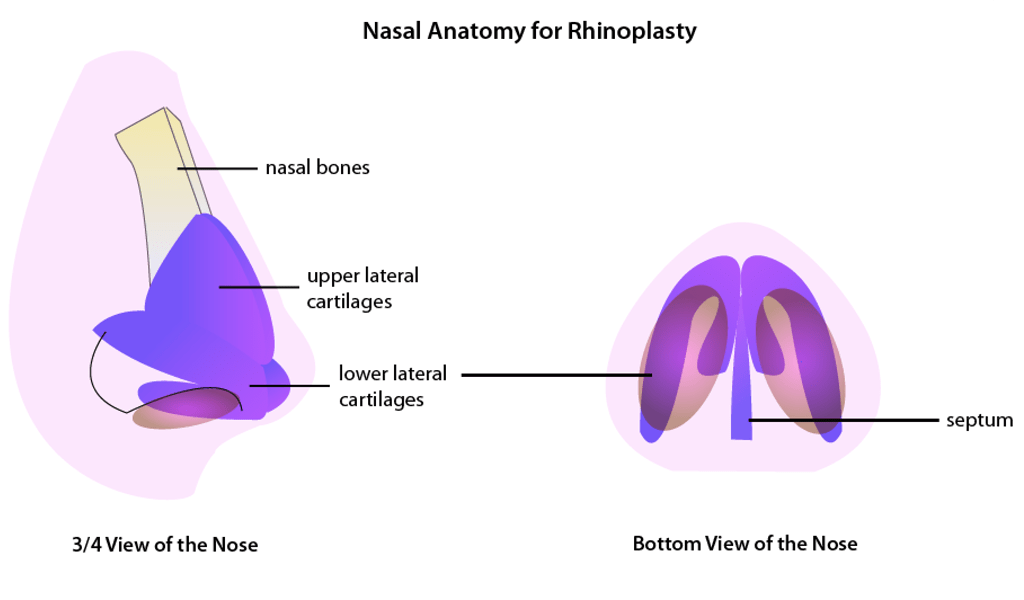
FAQs
What is the nature of the procedure and recovery process?
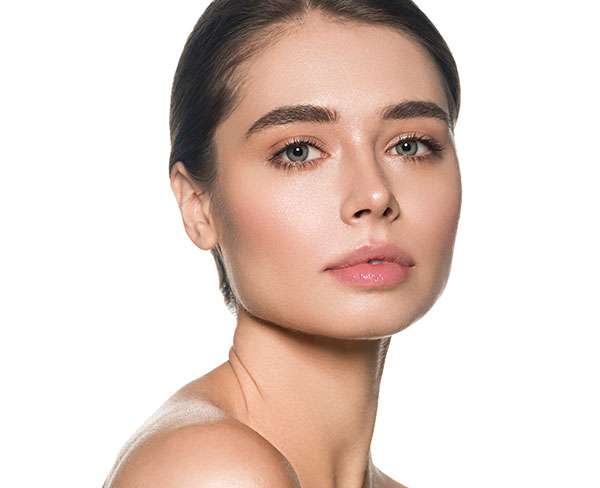 If you are 18 years or older, Dr. Lam perform your rhinoplasty in his accredited surgical facility under general anesthesia with hand-selected board-certified physician anesthesiologists who have been with him for at least a decade if not longer. If you are under 18 years of age, he will perform your procedure a few blocks away at the Texas Health Presbyterian Hospital based on state regulations and guidelines. The procedure typically lasts about 2 to 3 hours but could last slightly longer. You will go home the same day but you need to have a companion drive you home. During that week, you will have a nasal splint on top of your nose that you must keep dry by avoiding showering (you can tub-bathe your body or wash your hair in the sink.) If Dr. Lam lowered your bridge, you will have small packs inside your nose for one night that you remove yourself. These packs stabilize the nasal bone but can be painlessly removed at your home the following morning. These are completely different from the painful, long nasal packs of yesteryear. You can even breathe around these tiny packs, and, as mentioned, they only stay one night. Your nose may drip clear to blood-tinged fluid for the first few days. This nasal drip represents your nose not working properly but the cilia in the nose will start to function properly again in a few days and this will stop very quickly. Nasal tip dressings that Dr. Lam provide for you will make this easy for you to tolerate. Typically, Dr. Lam’s rhinoplasties have very little pain following a procedure and very little bruising. He has not seen a lot of swelling, pain, or bruising after his rhinoplasties because he is an efficient and gentle surgeon using very tiny instruments to perform his procedures.
If you are 18 years or older, Dr. Lam perform your rhinoplasty in his accredited surgical facility under general anesthesia with hand-selected board-certified physician anesthesiologists who have been with him for at least a decade if not longer. If you are under 18 years of age, he will perform your procedure a few blocks away at the Texas Health Presbyterian Hospital based on state regulations and guidelines. The procedure typically lasts about 2 to 3 hours but could last slightly longer. You will go home the same day but you need to have a companion drive you home. During that week, you will have a nasal splint on top of your nose that you must keep dry by avoiding showering (you can tub-bathe your body or wash your hair in the sink.) If Dr. Lam lowered your bridge, you will have small packs inside your nose for one night that you remove yourself. These packs stabilize the nasal bone but can be painlessly removed at your home the following morning. These are completely different from the painful, long nasal packs of yesteryear. You can even breathe around these tiny packs, and, as mentioned, they only stay one night. Your nose may drip clear to blood-tinged fluid for the first few days. This nasal drip represents your nose not working properly but the cilia in the nose will start to function properly again in a few days and this will stop very quickly. Nasal tip dressings that Dr. Lam provide for you will make this easy for you to tolerate. Typically, Dr. Lam’s rhinoplasties have very little pain following a procedure and very little bruising. He has not seen a lot of swelling, pain, or bruising after his rhinoplasties because he is an efficient and gentle surgeon using very tiny instruments to perform his procedures.The splint comes off in a week and all sutures (stitches) dissolve over a week or two. You will be able to return to work in most cases after the first week. The tiny stitches that remain are typically hard to see to the casual observer. At night you will have to tape the nose between 1 to 3 months. Taping the nose will help reduce swelling, minimize swelling that may occur in the morning, reduce the risk of scar tissue under the skin’s surface, and speed up the result of seeing the refinement of the nasal tip. Depending on your skin thickness Dr. Lam will instruct you how long to tape the nose at night. For the first few days after the splint comes off, you should wear the tape if you are resting at home. Otherwise, just wear the tape at night. If you miss one or two nights of taping that is not a big deal. Dr. Lam will provide you with the tape and show you how to do it. He has an instructional video on YouTube and on his website if you forget (just search “how to tape a nose after rhinoplasty Dr. Lam”).
Can I wear glasses after a rhinoplasty?
When can I work out after my procedure?
Does Dr. Lam make any external incisions on my nose?
For Asian rhinoplasty, what techniques does he have to raise my bridge?
Can Dr. Lam perform an injectable rhinoplasty?
How often do Dr. Lam want to see me after a rhinoplasty?
How Much Does Rhinoplasty Cost in Dallas?
Schedule A Consultation
As one of the most well-regarded plastic surgeons performing rhinoplasty in Dallas, Dr. Lam is here to answer all your questions about rhinoplasty. To confirm whether you are an ideal candidate for rhinoplasty, contact us today to schedule your in-person consultation.
Your Types will be performed by Dr. Lam' surgery center located in Plano, TX.

I’d been desiring a rhinoplasty and searched and attended consultations with several doctors. Dr. Lam was very open and honest about surgery. My experience with Dr. Lam and his staff has been truly amazing. They are friendly, attentive, and give great attention to detail. I’m very happy with my results.
Videos:
Photos:
Rhinoplasty Procedures:
Related Blog Posts
 Nose Surgery Dallas
Nose Surgery Dallas
Nose Surgery is a procedure that has helped a number of men and women achieve the nose they desired. The Nose, front and center of the face… Read More
 Rethinking the Alar-Base Reduction: When, How, and Why to Reduce the Nostrils in Rhinoplasty
Rethinking the Alar-Base Reduction: When, How, and Why to Reduce the Nostrils in Rhinoplasty
Reducing nostrils is an oftentimes major goal in rhinoplasty, particularly for ethnic noses but can be so for any ethnicity. There are many considerations when… Read More
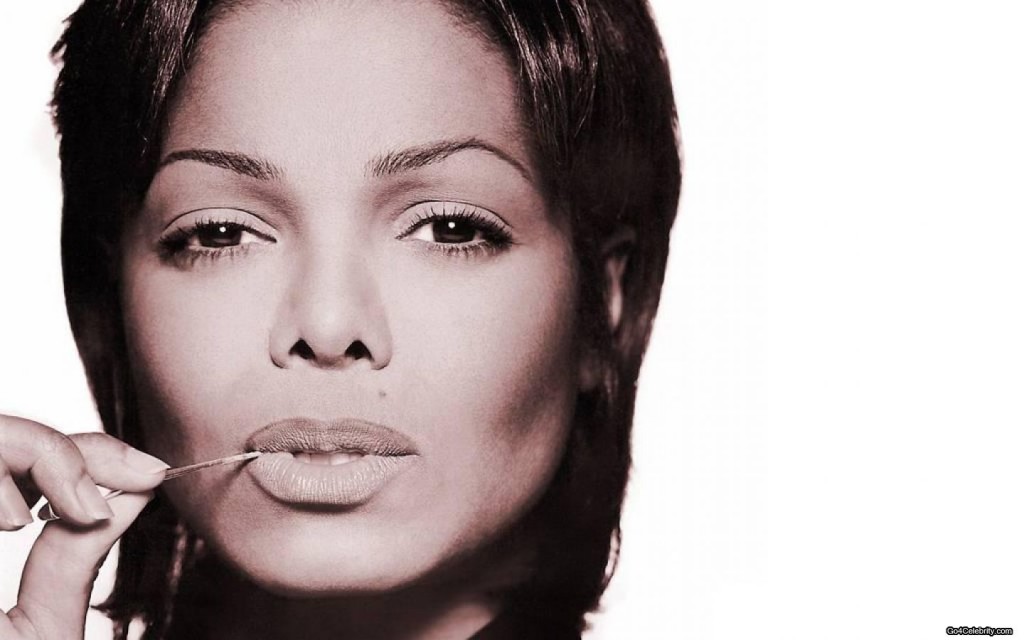 Cut-off Nostrils Following a Nose Job (Rhinoplasty)
Cut-off Nostrils Following a Nose Job (Rhinoplasty)
One of the ugliest things that I see with a traditional rhinoplasty, or traditional nose job, are cut-off nostrils. A nostril should naturally… Read More

